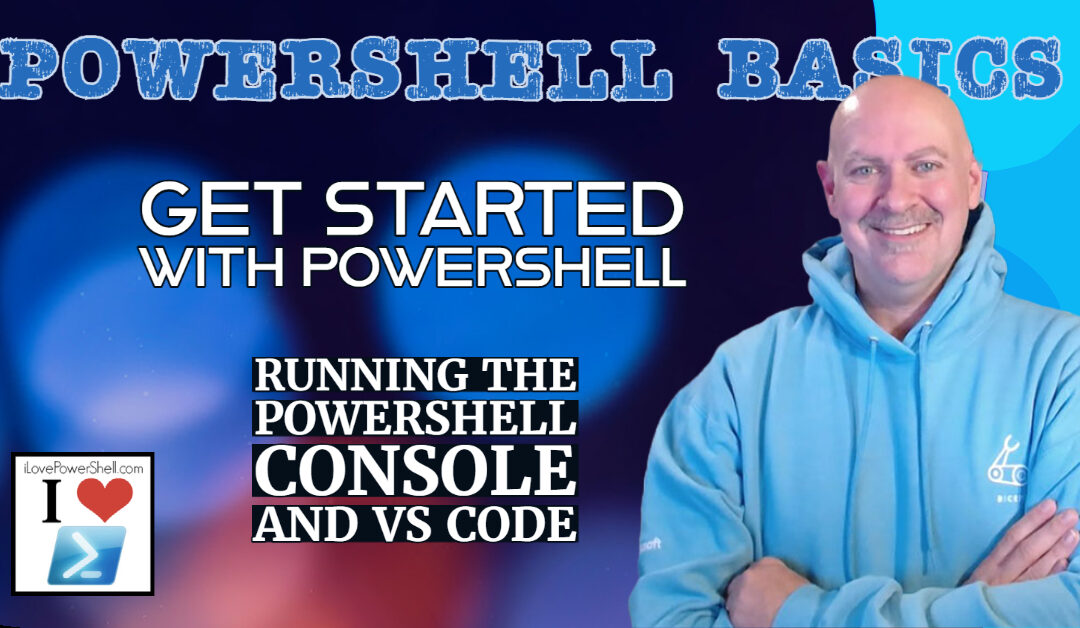PowerShell is a powerful scripting language and command-line shell that is designed to automate system administration tasks and manage Windows-based environments. With the release of PowerShell 7, it has also become a cross-platform tool that can run on Windows, macOS, and Linux. If you’re new to PowerShell, this article will help you get started with the basics of using the PowerShell console and Visual Studio Code (VS Code) to write, execute, and debug PowerShell scripts.
PowerShell Console
The PowerShell console is a command-line interface that provides a powerful environment for running PowerShell commands and scripts. It is available on Windows by default and can be accessed by opening the Start menu, typing “PowerShell,” and selecting the “Windows PowerShell” or “PowerShell 7” option.
While both of those consoles are functional, at this point you can leave Windows PowerShell behind and focus all of your efforts on learning with PowerShell 7.
When you launch the PowerShell console, you’ll see a command prompt that looks similar to the traditional Windows Command Prompt. However, PowerShell is much more powerful and flexible than the Command Prompt. It has its own scripting language, which includes more than 600 cmdlets that can be used to perform a wide range of system administration tasks. Those 600 cmdlets are only the beginning, too – since PowerShell has hundreds of modules available to administer practically anything, the number of cmdlets is practically unlimited.
To get started with PowerShell, you can type commands directly into the console and press Enter to execute them. For example, you can use the Get-Process cmdlet to display a list of running processes on your system:
PS C:\ Get-Process
This will display a list of running processes with details such as the process ID, name, and memory usage.
You can also use PowerShell to perform more complex tasks by writing PowerShell scripts. PowerShell scripts are text files that contain a series of PowerShell commands and statements that are executed in order. To create a PowerShell script, you can use any text editor, such as Notepad, but we recommend using Visual Studio Code.
Visual Studio Code
Visual Studio Code is a free, open-source code editor that is designed for developers and system administrators. It provides a rich set of features for editing, debugging, and executing PowerShell scripts, as well as other programming languages.
To get started with Visual Studio Code and PowerShell, you’ll need to install the PowerShell extension. To do this, follow these steps:
- Launch Visual Studio Code.
- Click on the “Extensions” icon in the left-hand menu.
- Search for “PowerShell” in the search bar.
- Click the “Install” button next to the PowerShell extension.
Once you’ve installed the PowerShell extension, you can use Visual Studio Code to create and edit PowerShell scripts. To create a new PowerShell script, follow these steps:
- Click on the “File” menu in the top left corner.
- Select “New File” from the dropdown menu.
- Type the PowerShell commands and statements that you want to include in your script.
- Click on the “File” menu again and select “Save As.”
- Choose a location and filename for your script, and make sure to add the “.ps1” file extension.
Once you’ve saved your script, you can execute it by opening the PowerShell console and typing the path to your script file. For example, if your script file is located in the “C:\Scripts” directory and is named “myscript.ps1,” you can execute it by typing the following command:
PS C:\> C:\Scripts\myscript.ps1
This will execute the PowerShell commands and statements in your script file and display the output in the console.
Conclusion
Getting started with PowerShell is easy, and using the PowerShell console and Visual Studio Code can help you quickly automate tasks and manage your Windows-based environment. With the release of PowerShell 7, you can also use PowerShell on macOS and Linux, making it a truly cross-platform tool.
While the console is useful for executing commands and testing code snippets, scripts are better written in a dedicated editor.
One such editor is Visual Studio Code (VS Code). It’s a free, open-source, cross-platform code editor with excellent PowerShell support. You can download it from the official website (https://code.visualstudio.com/).
To start using PowerShell in VS Code, you need to install the PowerShell extension. Launch VS Code and go to the Extensions tab. Search for “PowerShell” and click Install. Once installed, you can open a new PowerShell script file by clicking File > New File and selecting PowerShell as the language.
The PowerShell extension for VS Code offers several useful features, such as IntelliSense for cmdlets, functions, and parameters, a PowerShell terminal, and a debugger. The IntelliSense feature provides code completion, parameter info, and syntax highlighting to make your PowerShell scripting experience more efficient and effective.
The PowerShell terminal allows you to run PowerShell commands and scripts directly from VS Code. You can open the terminal by clicking View > Terminal. The terminal is highly configurable, and you can customize the font, color scheme, and shell executable.
The debugger feature is also a valuable asset when writing and testing PowerShell scripts. You can set breakpoints in your script, step through the code, and inspect variables to understand what’s going on.
In conclusion, the PowerShell console and VS Code are both excellent tools for working with PowerShell. The console is ideal for testing and executing commands, while VS Code is perfect for writing and editing scripts. With the PowerShell extension, VS Code provides an excellent environment for developing and debugging PowerShell scripts.
By mastering the PowerShell console and VS Code, you can unlock the full potential of PowerShell and become a proficient PowerShell scripter. The possibilities are endless, and you can use PowerShell to automate almost anything on your system. Whether you’re a system administrator, IT professional, or developer, PowerShell is an essential tool in your toolkit. So, don’t hesitate, start learning PowerShell today and take your skills to the next level!


